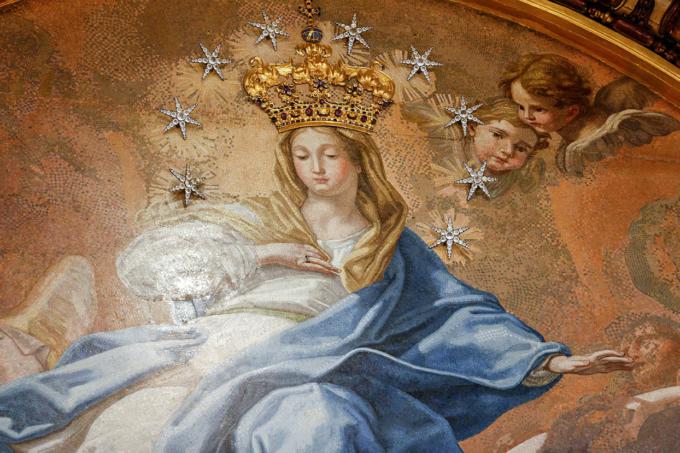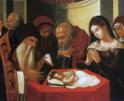
Faith

Sundays above all, and then a few special days -- holy days -- are important days for all of us Roman Catholics to be together at Mass.

O'Grady
The Solemnity of the Immaculate Conception of the Blessed Virgin Mary (Dec. 8) is a holy day in the U.S. because it is under this title that the Mother of the Lord is our patroness -- it is now always a holy day of obligation.
This year, Dec. 8 is the Second Sunday of Advent, and so has liturgical preference over the Immaculate Conception. Because of the significance of this Marian feast, its observance is moved this year to Monday, Dec. 9, 2024. And, according to a response from the Holy See to an inquiry from the U.S. bishops, the obligation is also transferred. This is a new interpretation of the church's law. So, Dec. 9, 2024, the Solemnity of the Immaculate Conception is now always a holy day of obligation.
Here's what the bishops of the country stated:
"Earlier this year, Bishop Thomas J. Paprocki, chairman of the USCCB's Committee on Canonical Affairs and Church Governance, wrote to the Holy See seeking clarification about the obligation to attend Mass when a holy day of obligation in Advent, Lent, or Easter falls on Sunday and the solemnity is transferred to Monday. In a memo to the United States bishops dated Thursday, Oct. 10, Bishop Paprocki communicated the Dicastery for Legislative Text's response: 'the feast must be observed as a day of obligation on the day to which it is transferred.' In light of this new directive, the Solemnity of the Immaculate Conception Monday, Dec. 9, 2024, is to be observed as a holy day of obligation."
This will cause not a little confusion to parishes and to parishioners because there are two obligations to attend Holy Mass between Dec. 7, 2024, after 4:00 p.m. and until Dec. 9, 2024, at midnight. This is the "canonical" issue.
Roman Catholics fulfill the two obligations by attending two valid Masses celebrated in any Latin or Eastern Catholic rite. The two Masses may be distributed in any of the following combinations to satisfy the two obligations:
-- Any Mass on Saturday evening Dec. 7, 2024, after 4:00 p.m. and any Mass on Monday, Dec. 9, 2024, until midnight.
-- Any Mass on Saturday evening Dec. 7, 2024, after 4:00 p.m. and any Mass after 4:00 p.m. in the evening on Sunday, Dec. 8, 2024.
-- Any Mass on Sunday, Dec. 8, 2024, before 4:00 p.m. and any Mass after 4:00 p.m. in the evening on Sunday, Dec. 8, 2024.
-- Any Mass on Sunday, Dec. 8, 2024, at any time and any Mass on Monday, Dec. 9, 2024, at any time.
Permit me to be glib -- there are no "twofers!"
If you are not yet confused, keep reading.
A separate question is a liturgical question, that is, what prayers and readings do we use?
For any Mass celebrated from Saturday evening, Dec. 7, 2024, after 4:00 p.m. until midnight between Dec. 8 and Dec. 9, 2024 -- the prayers and readings for the Second Sunday of Advent and violet vestments are used.
Mass celebrated after midnight between Dec. 8 and Dec. 9, 2024 -- the prayers and readings for the Solemnity of the Immaculate Conception and white or other festive vestments are used. Reminder: blue is not a liturgical color in the United States of America.
The prayers and readings of the Vigil of the Solemnity of the Immaculate Conception are not used this year.
While I shall be repeating this column next year at this time, since there will be "colliding" days of obligation again regarding the same liturgical days: Second Sunday of Advent, Dec. 7, 2025, and the Solemnity of the Immaculate Conception of the Blessed Virgin Mary on Monday, Dec. 8, 2025. The same canonical and the same liturgical directives will apply.
This is genuinely confusing, and there is not much we can do about calendars. I can also tell you that many priests are as perplexed by all this as are their parishioners.
Sundays above all, and then a few special days -- holy days -- are important days for all of us Roman Catholics to be together at Mass. It's a way we say to ourselves and to others these days are so important that we gather for Mass. And as far as possible, we avoid unnecessary labor. We make these days "different."
And as often we do this as Roman Catholics, we do this together. It's so impressive that the secular media will often cover and report on our "being together" -- think of Christmas -- a holy day of obligation; or Ash Wednesday not a holy day; or the recent Mass for the installation of our new archbishop. Lots of people take notice.
Lastly, a reminder that funeral Masses may not be celebrated on this or any other holy day of obligation.
Recent articles in the Faith & Family section
-
Presentation of the LordFather Robert M. O'Grady
-
Life is beautifulArchbishop Richard G. Henning
-
Faith to Rebuild in PakistanMaureen Crowley Heil
-
Scripture Reflection for Jan. 26, 2025, Third Sunday in Ordinary TimeFather Joshua J. Whitfield
-
Why you should visit a monasteryDr. R. Jared Staudt























